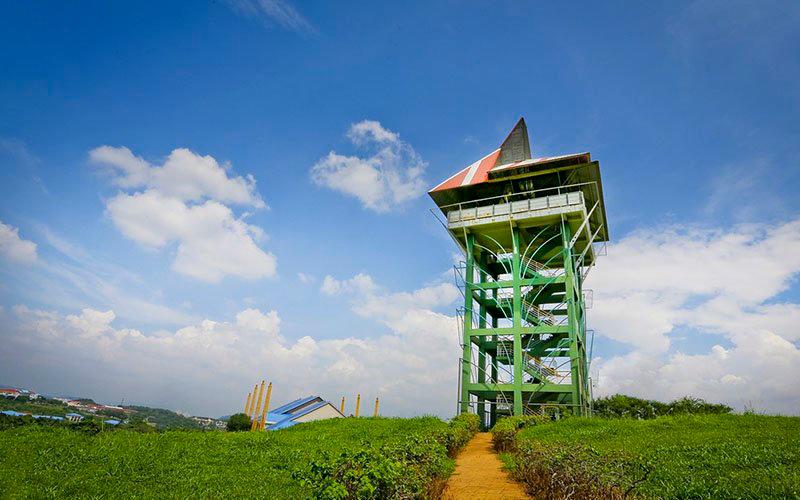IMAGINE you are locked down within four walls in the city over a certain period of time because of a pandemic.
Suddenly, mass vaccination is completed and you are emancipated to break away.
It is time to get out from the city to the countryside to explore a new adventure called agri-tourism, which offers thrilling activities such as guided tours, fruit picking, animal feeding, nurturing greenery as well as exploring the rural cultures within the natural surroundings.
Undeniably, nature is the best remedy for the hustle and bustle of a busy world.
Nature can be rejuvenating for us holistically as city life can definitely be overwhelming.
The tourism industry is one of the largest economic sectors around the world.
Travelling to some part of the world is gaining more importance due to various reasons.
Therefore, several factors are taking place in helping to identify tourist’s choice towards their selected destinations. It is an economic sector that is growing rapidly at both the global and state levels. Tropical, coastal and developing countries are just a few of the examples as you can see.
Tourism represents a major source of employment, government funding and foreign exchange turnovers that increase a country’s economy.
The UN World Tourism Organisation described tourism as a cultural and economic phenomenon which involves people moving from or to countries, places or environments they are not familiar with for personal or business purposes.
The business tourism activities also includes tourism and some may require expenditure during the tour.
There are many types of tourism such as cultural tourism, adventure tourism, ecotourism, wildlife tourism, medical tourism, sports tourism, religious tourism and many more.
Although some wide-ranging meanings of the term tourism indicate the explanations, including the definitions about leisure activities.
The sector has grown from the primary travelling activities to today’s current popular facilities in recent years through new demands.
The requirements such as health, education, sports organisations, religion, shopping, trade and so on are providing new directions for the tourism sector through opportunities of globalisation of knowledge and more effective travelling facilities.
Hence, agri-tourism is actually a type of a business venture located on a ranch, working farm or agricultural enterprise that provides an understanding for visitors while generating supplemental income for the owner.
In this form of tourism, tourists will be able to experience nature or agricultural based on the environment in the form of educational and entertainment discovery.
The demand has grown tremendously for the agri-tourism division until today.
Not only has it expanded in developed countries but also in developing ones as well under the integration of principles of sustainability, tourism development and rural development.
Agri-tourism can help to reconstruct and redefine the tourism sector in a new, more sustainable way.
Over the years, agri-tourism has become popular among travellers in exploring rural cultures.
It is creating a demand for agricultural products, which in return contribute to rural development by means of growing the local economy.
Hence, “sustainable green tourism” does not only benefit the economic sector but also opens up windows of opportunities in preserving rural lifestyles and stunning natural landscapes.
Agri-tourism comprises on-farm and off-farm agricultural activities. There is a wide variety of authentic on-farm experiences that one may explore such as outdoor recreational activities (including fishing, hunting, wildlife viewing, and horseback riding), educational experiences (tours, cooking classes), entertainment (harvest festivals, barn dances, hayrides, petting farm animals), hospitality services (overnight farm, farm meals) and on-farm direct sales (pick-your own strawberries or farmer’s market).
On the other hand, off-farm activities normally involve buying spirits and indulging in homegrown food such as from the farmers markets, fruit stands and restaurants highlighting local harvest.
Other than that, you may also gain educational and entertainment experiences while visiting public festivals, museums and events highlighting the agriculture heritage.
Malaysia is rich in agricultural resources. Among the agri-tourism activities that have been established include ecotourism, orchards, animal farms, village tourism and rural tourism.
One of the best examples is Cameron Highlands, which is situated about 1,500m above sea level on the Titiwangsa Range.
It is recognised as one of Malaysia’s most popular tourist destinations.
Here, you can find several breathtaking resorts, flower nurseries, tea plantations and strawberry farms located along the valleys and hill slopes.
The lovely sight of tea plantations and beautiful flowers can be found here.
It is the perfect setting for a relaxing agri-tourism holiday, for those looking to break away from the concrete jungle.
The accommodation at Cameron Highlands has expanded over the years.
There is an abundance of farm stays, camping sites, hostels and resorts for those looking forward to the cool climate and refreshing air, sounds of nature and waking up to a peaceful green scenery.
The lakehouse is one of the noteworthy stays, which is a charming Tudor-style boutique hotel, standing atop a hill overseeing rolling hills and grassy woodlands.
In the meantime, it is true there are some “hiccups” in the hospitality and tourism industry given the pandemic situation currently.
However, I am certainly sure that there are people waiting to travel and get away from the concrete jungle into a real one. Wondering, who said hospitality and tourism industry are at stake?
Dr Ong Siew Har @ Chris is dean of Faculty of Hospitality and Tourism, Berjaya University College. Comments: letters@thesundaily.com










